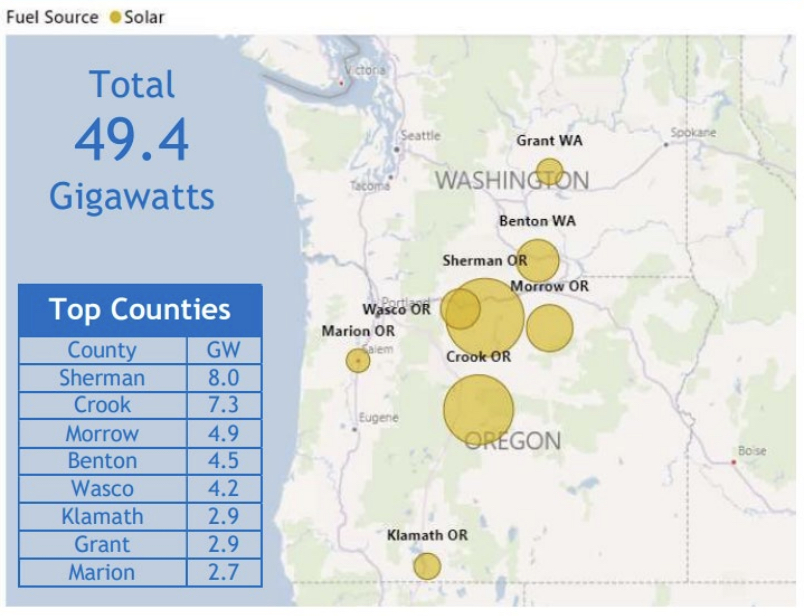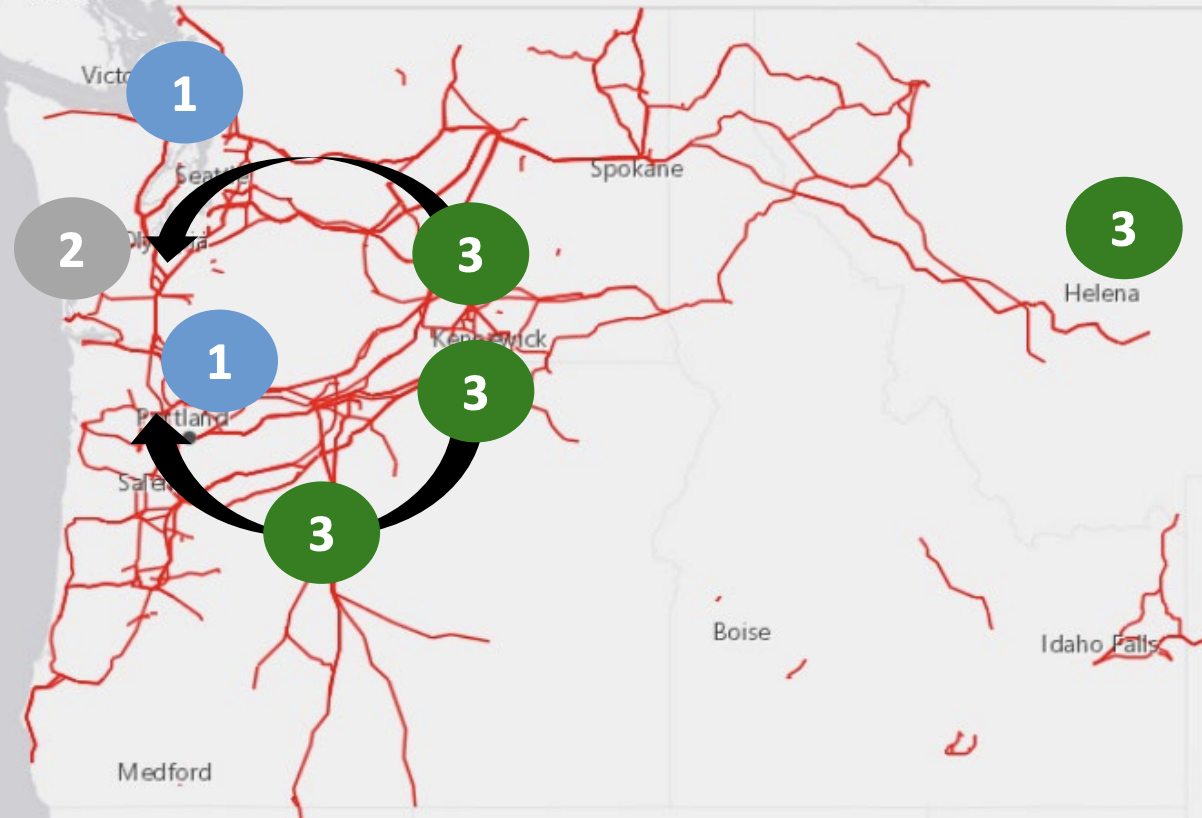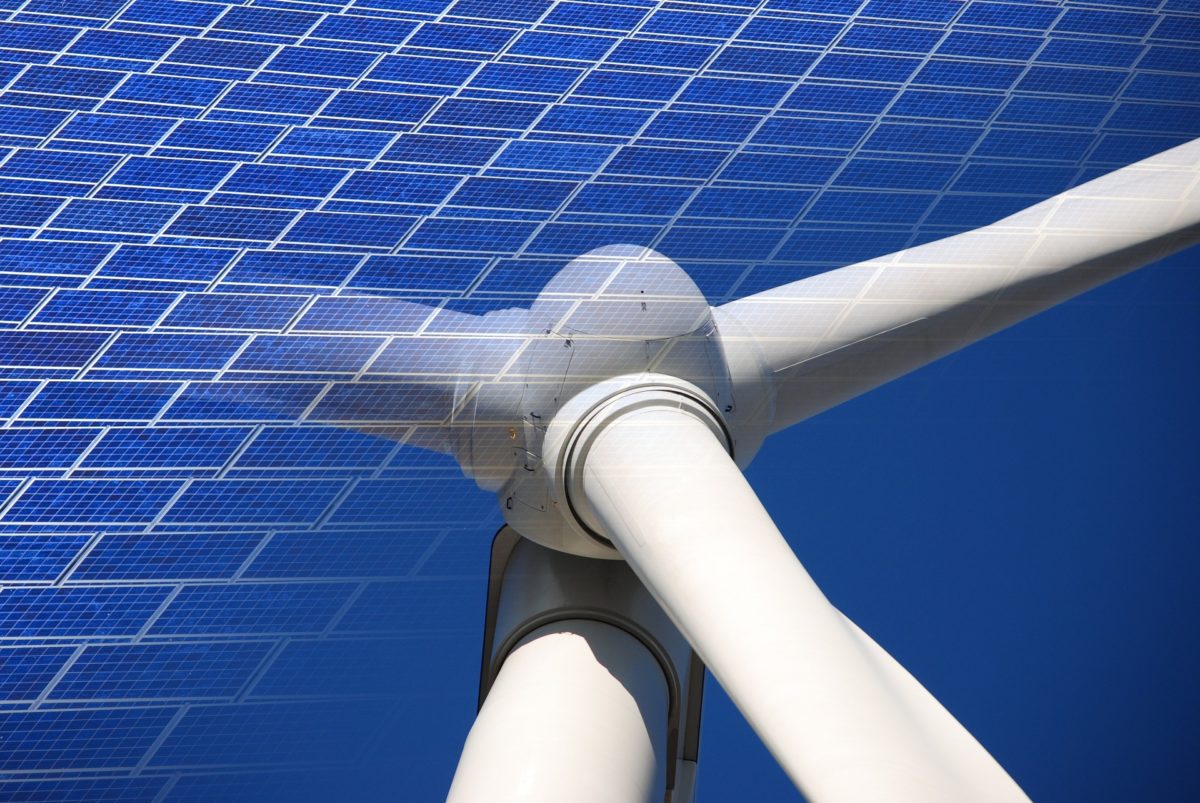The federally owned Bonneville Power Administration is “moving forward” with transmission projects budgeted at $1.35 billion, with expected completion between 2025 and 2032, the utility said.
If all the projects are built, they would provide 6 GW of additional capacity on BPA’s transmission network.
The planned transmission projects would upgrade existing BPA transmission lines that carry power from east of the Cascade Mountains to the Puget Sound area and Portland.
The projects, along with substation and line projects, “are a major part of BPA’s Evolving Grid effort” that is designed to meet regional transmission needs over the next two decades, the utility said.
One of the transmission projects would upgrade an existing transmission line from 230 kV to 500 kV, approximately doubling the line’s capacity.
The list of planned transmission projects is likely to expand when BPA finalizes its 2023 cluster study for generator interconnection requests, the utility added.
The region served by BPA is expected to see at least 10 GW of new generating resources interconnected by 2032, consisting of about 90% solar and wind power and the rest fossil gas, the Pacific Northwest Utilities Conference Committee projected last year.
Generation projects waiting in BPA’s interconnection queue for a final interconnection study include 49 GW of solar, as shown on the nearby map, 21 GW of wind, and 51 GW of storage, the utility said in an April presentation.

BPA said that “traditionally” 10% to 15% of generator interconnection requests “follow through to energization.”
The Pacific Northwest region now has more than 7 GW of wind and solar generation interconnected.
BPA said its planned transmission upgrades will help meet load growth in Portland and Seattle, driven by the high-tech industry and electrification of transportation and buildings. BPA projects “reduced operation” of 4.5 GW of carbon-emitting generators in the coastal region, and said that “replacement” solar and wind resources are located east of the Cascade Mountains. The three dynamics are indicated on the nearby map.
BPA maintains about 75% of the high-voltage transmission network in its service territory, and markets power from 22 GW of hydropower plants.

A process launched last year by Governor Jay Inslee and U.S. Senator Patty Murray, both of Washington, evaluated breaching four hydropower dams in the lower Snake River to protect salmon populations from going extinct, and replacing their generating capacity with renewables. Building 1.3 GW of solar, 1.4 GW of wind and 0.2 GW of battery capacity would be the lowest-cost option for replacing the four dams’ annual generation, said a study cited in a draft report commissioned by Governor Inslee.
Washington State has set a target for all electric utilities to be greenhouse gas neutral by 2030, while Oregon has set a target for greenhouse gas emissions to be 80% below the 2005 baseline by 2030, BPA said.
This content is protected by copyright and may not be reused. If you want to cooperate with us and would like to reuse some of our content, please contact: editors@pv-magazine.com.








By submitting this form you agree to pv magazine using your data for the purposes of publishing your comment.
Your personal data will only be disclosed or otherwise transmitted to third parties for the purposes of spam filtering or if this is necessary for technical maintenance of the website. Any other transfer to third parties will not take place unless this is justified on the basis of applicable data protection regulations or if pv magazine is legally obliged to do so.
You may revoke this consent at any time with effect for the future, in which case your personal data will be deleted immediately. Otherwise, your data will be deleted if pv magazine has processed your request or the purpose of data storage is fulfilled.
Further information on data privacy can be found in our Data Protection Policy.